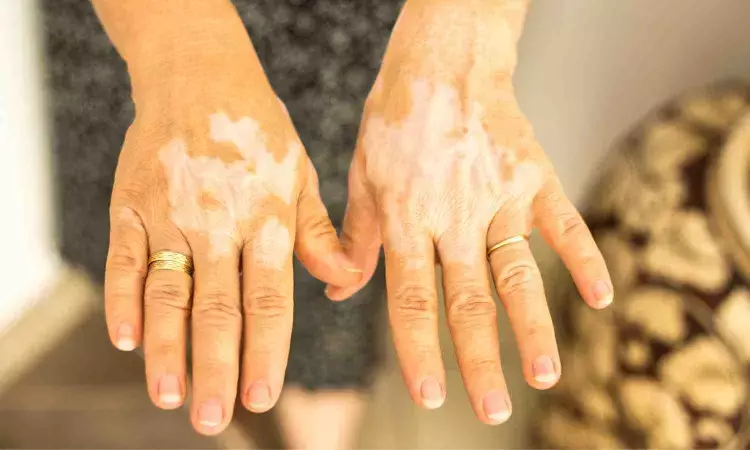- Home
- Medical news & Guidelines
- Anesthesiology
- Cardiology and CTVS
- Critical Care
- Dentistry
- Dermatology
- Diabetes and Endocrinology
- ENT
- Gastroenterology
- Medicine
- Nephrology
- Neurology
- Obstretics-Gynaecology
- Oncology
- Ophthalmology
- Orthopaedics
- Pediatrics-Neonatology
- Psychiatry
- Pulmonology
- Radiology
- Surgery
- Urology
- Laboratory Medicine
- Diet
- Nursing
- Paramedical
- Physiotherapy
- Health news
- Fact Check
- Bone Health Fact Check
- Brain Health Fact Check
- Cancer Related Fact Check
- Child Care Fact Check
- Dental and oral health fact check
- Diabetes and metabolic health fact check
- Diet and Nutrition Fact Check
- Eye and ENT Care Fact Check
- Fitness fact check
- Gut health fact check
- Heart health fact check
- Kidney health fact check
- Medical education fact check
- Men's health fact check
- Respiratory fact check
- Skin and hair care fact check
- Vaccine and Immunization fact check
- Women's health fact check
- AYUSH
- State News
- Andaman and Nicobar Islands
- Andhra Pradesh
- Arunachal Pradesh
- Assam
- Bihar
- Chandigarh
- Chattisgarh
- Dadra and Nagar Haveli
- Daman and Diu
- Delhi
- Goa
- Gujarat
- Haryana
- Himachal Pradesh
- Jammu & Kashmir
- Jharkhand
- Karnataka
- Kerala
- Ladakh
- Lakshadweep
- Madhya Pradesh
- Maharashtra
- Manipur
- Meghalaya
- Mizoram
- Nagaland
- Odisha
- Puducherry
- Punjab
- Rajasthan
- Sikkim
- Tamil Nadu
- Telangana
- Tripura
- Uttar Pradesh
- Uttrakhand
- West Bengal
- Medical Education
- Industry
Herpes Simplex Virus Infection Linked to Increased Risk of Vitiligo, Study Suggests

Taiwan: A nationwide retrospective cohort study has revealed a significant association between herpes simplex virus (HSV) infection and an increased risk of developing vitiligo, a chronic skin condition characterized by the loss of pigment in patches of the skin. This population-based study, published in Archives of Dermatological Research, offers new insights into the potential role of viral infections in the pathogenesis of autoimmune diseases like vitiligo.
Results indicated that individuals with a history of HSV infection were more likely to develop vitiligo over time, suggesting a potential link between the two conditions. The findings emphasize the importance of considering viral infections as a possible contributing factor in the onset of autoimmune and inflammatory skin disorders.
Several studies have suggested a potential link between herpes simplex virus infection and the development of vitiligo. Jing-Xing Li, Department of Internal Medicine, China Medical University Hospital, Number 2, Yude Road, North District, Taichung, Taiwan, and colleagues aimed to investigate the association between HSV infection and the risk of vitiligo.
For this purpose, the researchers utilized the National Health Insurance Research Database of Taiwan to conduct a comparative analysis between individuals with and without a diagnosis of HSV infection. The study covered the period from January 1, 2008, to December 31, 2019. The primary outcome included the date of the first vitiligo diagnosis, death, withdrawal from the National Health Insurance Program, or the conclusion of the study period.
The study led to the following findings:
- A 1:1 propensity score matching was performed based on age, sex, and comorbidities, resulting in 1,009,445 matched pairs of patients with and without HSV infections.
- The adjusted hazard ratio for developing vitiligo in the HSV-infected group was 1.71.
- An age-dependent pattern was observed among HSV-infected patients with vitiligo.
- Both males and females showed a significantly higher risk of developing vitiligo in the presence of HSV infection.
- The HSV-infected group demonstrated a significantly increased cumulative risk of vitiligo over a 12-year follow-up compared to the non-HSV group.
- Sensitivity analysis confirmed results consistent with the primary analysis.
- The risk of vitiligo was notably higher within the first year of follow-up among HSV-infected patients compared to the non-HSV group (adjusted hazard ratio, 4.83).
"The study establishes a notable link between HSV infection and an elevated risk of vitiligo, marking a significant step toward unraveling the complex interplay between viral infections and autoimmune disorders. However, further research, including molecular studies of affected skin regions, is essential to confirm causality and explore the underlying mechanisms of this association," the researchers concluded.
Reference:
Li, JX., Yu, TS., Hsu, SB. et al. Association of herpes simplex virus infection and vitiligo: a nationwide retrospective cohort study. Arch Dermatol Res 317, 90 (2025). https://doi.org/10.1007/s00403-024-03612-x
Dr Kamal Kant Kohli-MBBS, DTCD- a chest specialist with more than 30 years of practice and a flair for writing clinical articles, Dr Kamal Kant Kohli joined Medical Dialogues as a Chief Editor of Medical News. Besides writing articles, as an editor, he proofreads and verifies all the medical content published on Medical Dialogues including those coming from journals, studies,medical conferences,guidelines etc. Email: drkohli@medicaldialogues.in. Contact no. 011-43720751


